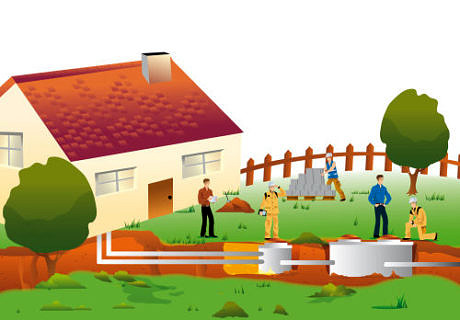FAU researchers develop new geothermal drilling technology
FAU geologists participate in EU research project on improving geothermal systems
Geologists at FAU want to find out how much the construction and operating costs of geothermal systems can be reduced. As part of a four-year international project, they will work with 15 European partners from research and industry to test new drilling technology and improve geothermal systems. The EU has provided almost six million euros in funding for this research. The overall aim of the Cheap-GSHP project is to ensure that geothermal energy remains a marketable alternative source of heat energy for private households.
Making use of geothermal energy is not a new concept – the Romans used hot springs in their baths back in Antiquity. Of course, the technology for using geothermal energy has advanced considerably since then. Today’s technology involves drilling down into the earth in order to make use of the effects of geothermal energy, although no more than 400 metres below the surface. For most uses, such as heating and cooling systems for private households, it is sufficient to drill down to a depth of less than 100 metres. These systems are known as shallow geothermal systems.
Reducing costs through new drilling technologies
Dr. David Bertermann and Johannes Müller from Geozentrum Nordbayern at FAU are now investigating how the construction and operating costs of shallow geothermal systems can be reduced. ‘One of the ways in which we would like to reduce costs is by developing new drilling technologies. Our task is to stay above a depth of 50 metres, which would reduce the costs considerably,’ says David Bertermann, who is responsible for the part of the project focused on developing probe and drilling technologies. As he explains, improving vertical geothermal probes and specific types of geothermal baskets is also very important, as the drilling technology and the design of the probes have to be made compatible. A vertical geothermal probe is a closed pipe system filled with a heat-conducting liquid that either absorbs or releases heat under the surface. Geothermal baskets, while they essentially work in the same way as vertical probes, are horizontal geothermal systems and can normally only be used at depths of one to four metres. The researchers intend to test a special prototype basket system that can be used at greater depths.
Soil conditions a crucial factor
The soil conditions are also another crucial factor that influences the cost of installation and how efficiently a system operates. In light of this, researchers are collecting data on soil conditions for the EU-funded Cheap-GSHP project. This includes information on the drillability and conductivity of the soil, both of which vary greatly depending on the type of rock. Higher drillability means that is it easier and less expensive to drill the required boreholes. The depth of the holes depends on the conductivity of the soil – higher conductivity means that the depth required is shallower. This data, collected from all over Europe, will be summarised in a map and made publicly available.
Testing in Eltersdorf
The FAU researchers will test the new drilling technologies and modified heat exchange systems in Eltersdorf near Erlangen in order to determine whether they are able to reduce the costs and increase the productivity of geothermal systems as planned. The EU has provided around 6 million euros in funding for this research as part of its Framework Programme for Research and Innovation, Horizon 2020. ‘The ultimate goal is to ensure that regenerative and climate-neutral geothermal energy remains a marketable alternative energy source for private households,’ David Bertermann explains.
Further information:
Dr. David Bertermann
Phone: +49 9131 8525824
david.bertermann@fau.de
